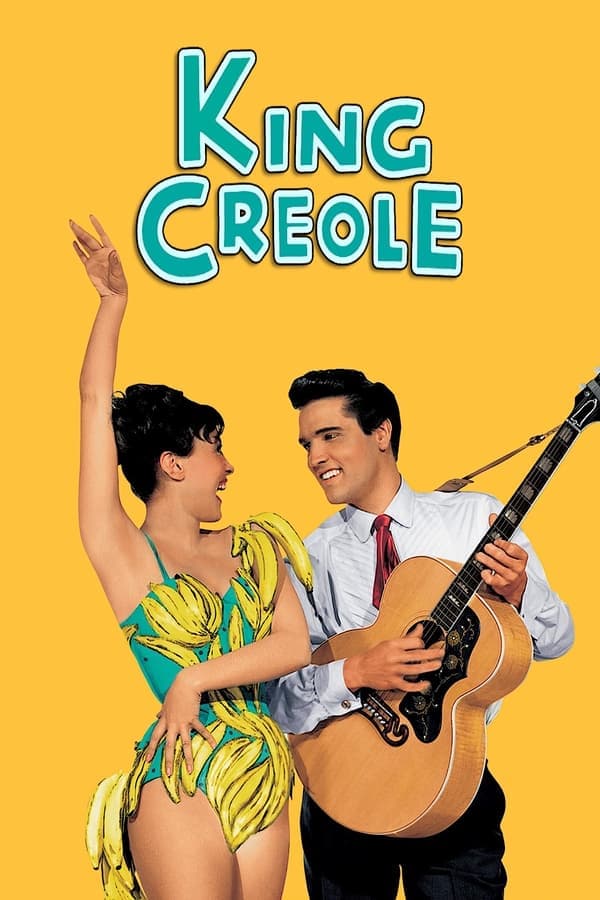
King Creole
1958 • Crime, Drama, Music
Danny Fisher, young delinquent, flunks out of high school. He quits his job as a busboy in a nightclub, and one night he gets the chance to perform. Success is imminent and the local crime boss Maxie Fields wants to hire him to perform at his night club The Blue Shade. Danny refuses, but Fields won't take no for an answer.
Runtime: 1h 56m
Why you should read the novel
If you’re interested in rich, complex storytelling, reading A Stone for Danny Fisher offers a far more immersive experience than King Creole ever could. Harold Robbins’ novel delves deeply into the psychology, aspirations, and struggles of its protagonist, providing a nuanced portrait of a young man fighting for survival in Depression-era Brooklyn. The novel's gritty realism and intricate character development allow readers to connect emotionally and intellectually with Danny’s journey, feeling every setback and triumph along the way.
Robbins paints a vivid picture of urban life, societal tensions, and family dynamics that’s hard to fully capture in a two-hour film adaptation. The inner thoughts, motivations, and moral ambiguities of Danny are explored with sophistication and honesty, offering a level of depth most movies simply can’t convey. By reading the novel, you witness a raw and unsanitized version of the story’s themes, free from the constraints of Hollywood’s need for musical numbers and star vehicles.
A Stone for Danny Fisher invites you to engage with a powerful, tragic coming-of-age story that transcends its time and place. The book stands as a classic of American fiction, rewarding careful readers with insight into human nature, resilience, and the cost of chasing dreams amid adversity. Choose the original novel for an unforgettable narrative journey far richer than its film adaptation.
Adaptation differences
King Creole and A Stone for Danny Fisher differ significantly in terms of setting and atmosphere. While Robbins’ original 1952 novel unfolds in 1930s Brooklyn during the Great Depression, the movie relocates the storyline to the jazz-saturated streets of New Orleans. This shift in location brings with it a profound change in cultural background, social context, and overall mood. The film infuses musical and nightclub elements to suit Elvis Presley’s talents, distancing itself from the gritty urban realism central to the book.
The protagonist’s ambitions also diverge. In the novel, Danny Fisher is a young boxer battling poverty, family troubles, and a turbulent environment. His struggles are rooted in social mobility and coming-of-age dilemmas. The film, by contrast, transforms Danny into a nightclub singer, making his motivations and rise to fame revolve around music rather than boxing. This not only alters his psychological complexity but tailors the story to fit Elvis Presley’s established persona and strengths.
Character relationships and key plotlines are modified as well. The movie introduces different romantic interests and secondary characters, reworking or omitting several figures vital to the book’s narrative. Consequently, the film simplifies or reshapes emotional dynamics, particularly involving Danny’s family and personal aspirations, thus streamlining the storyline for cinematic purposes. Some dark, pivotal events in the novel are sanitized or omitted entirely to appeal to a broader audience and comply with Hollywood sensibilities of the era.
Finally, the tone and themes diverge sharply. A Stone for Danny Fisher is an unflinching look at crime, generational conflict, and the complexities of the American Dream, all filtered through a lens of tragic realism. King Creole, however, balances crime drama with crowd-pleasing musical performances, resulting in a tonal shift that lightens or glosses over the bleaker aspects of Danny’s journey. While the film entertains, it cannot replicate the sobering, thought-provoking power of Robbins’ literary vision.
King Creole inspired from
A Stone for Danny Fisher
by Harold Robbins


